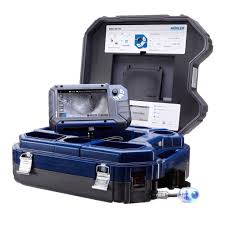Sewer systems may not be the most glamorous topic, but they are a critical piece of infrastructure that we rely on every day. Without proper maintenance, these systems can become clogged, damaged, and costly to repair. That’s where inspection cameras come in. These devices allow professionals to see inside pipes and identify issues before they become major problems. In this post, we’ll explore how inspection cameras are making a significant impact on sewer system maintenance.
Improved Efficiency
Before the advent of inspection cameras, identifying sewer system issues was a time-consuming process that involved digging up pipes to visually inspect them. This was not only expensive but also disruptive to communities as it required road closures and disrupted traffic flow. Inspection cameras have revolutionized this process by allowing workers to identify issues without disrupting the surrounding area. By reducing the need for excavation, inspection cameras have made sewer system maintenance more efficient and cost-effective.
Early Detection of Issues
Inspection cameras are equipped with high-quality lenses that capture detailed images of pipe interiors in real-time. This allows professionals to detect small cracks or other damage before they turn into major problems that require extensive repairs or replacements. Early detection not only saves money but also prevents sewage backups and other hazards from occurring.
Enhanced Safety
Inspecting sewers can be dangerous work due to hazardous gases, unstable ground conditions, and other risks associated with working in confined spaces. Inspection cameras allow workers to safely access hard-to-reach areas without putting themselves at risk. This improves safety for workers while also minimizing disruption to the surrounding community.
Better Data Collection
Inspection cameras provide high-resolution images that can be used for analysis and data collection purposes. This data can help professionals identify trends and patterns in sewer system maintenance needs over time, allowing for more proactive maintenance practices in the future. By tracking the condition of pipes and identifying areas that require attention, inspection cameras are helping communities stay ahead of potential issues.
Environmental Benefits
Sewer system failures can result in raw sewage entering waterways, which can have significant environmental impacts. Inspection cameras help to prevent these failures by identifying issues before they escalate into larger problems. By preventing sewage overflows and other hazards, inspection cameras are making a positive impact on the environment while also reducing the costs associated with cleanup and remediation efforts.
Conclusion:
Sewer Camera Inspection are proving to be invaluable tools for sewer system maintenance professionals across the country. From improving efficiency to enhancing safety, these devices are helping communities save money, protect the environment, and improve overall quality of life. As technology continues to evolve, it’s likely that we’ll see even more innovation in this area in the years to come. For now, however, we can be grateful for the impact that inspection cameras are having on our infrastructure and our daily lives.



